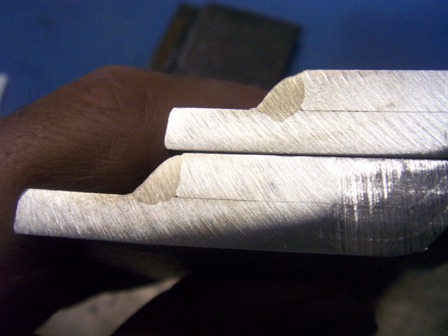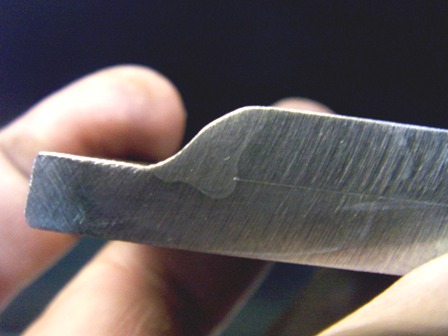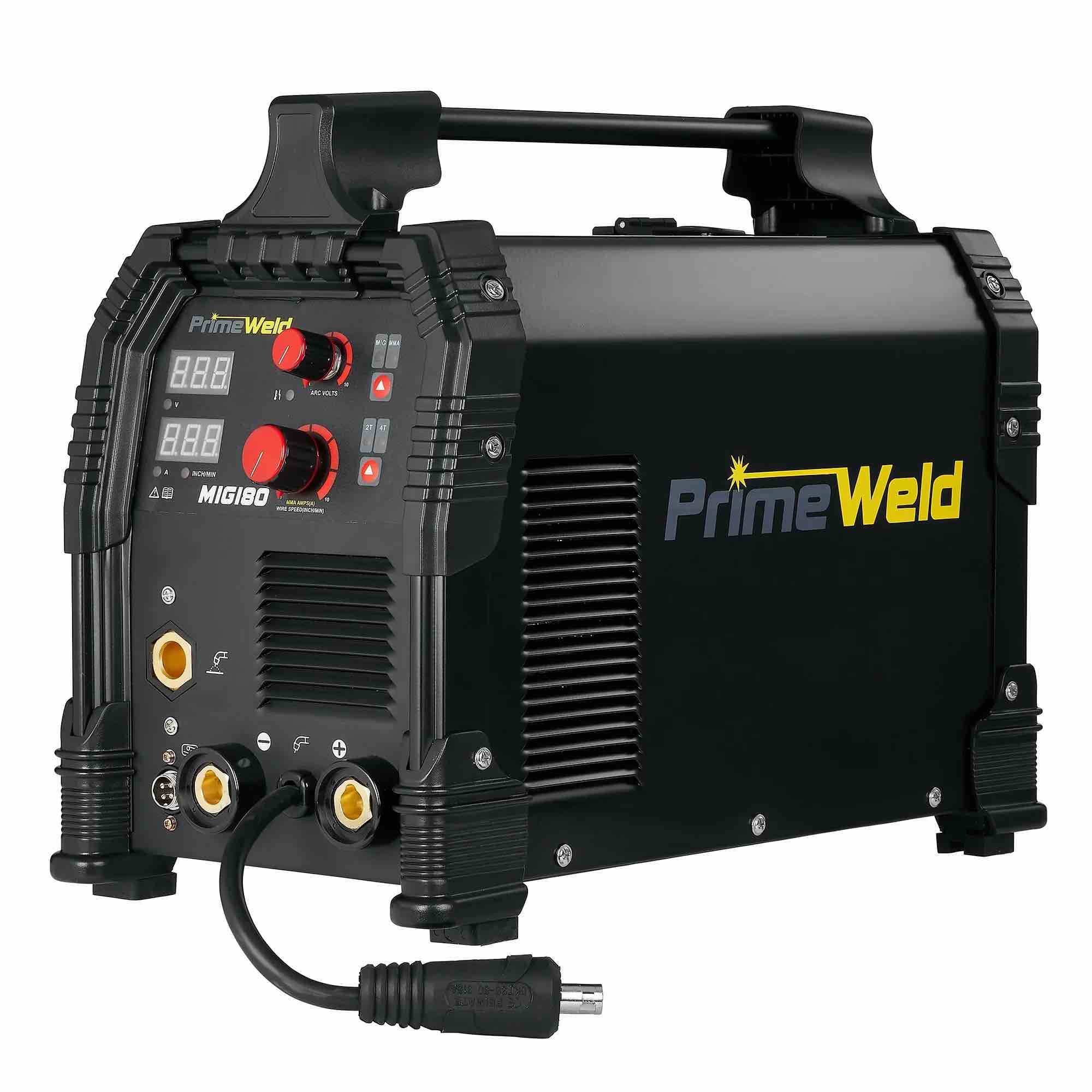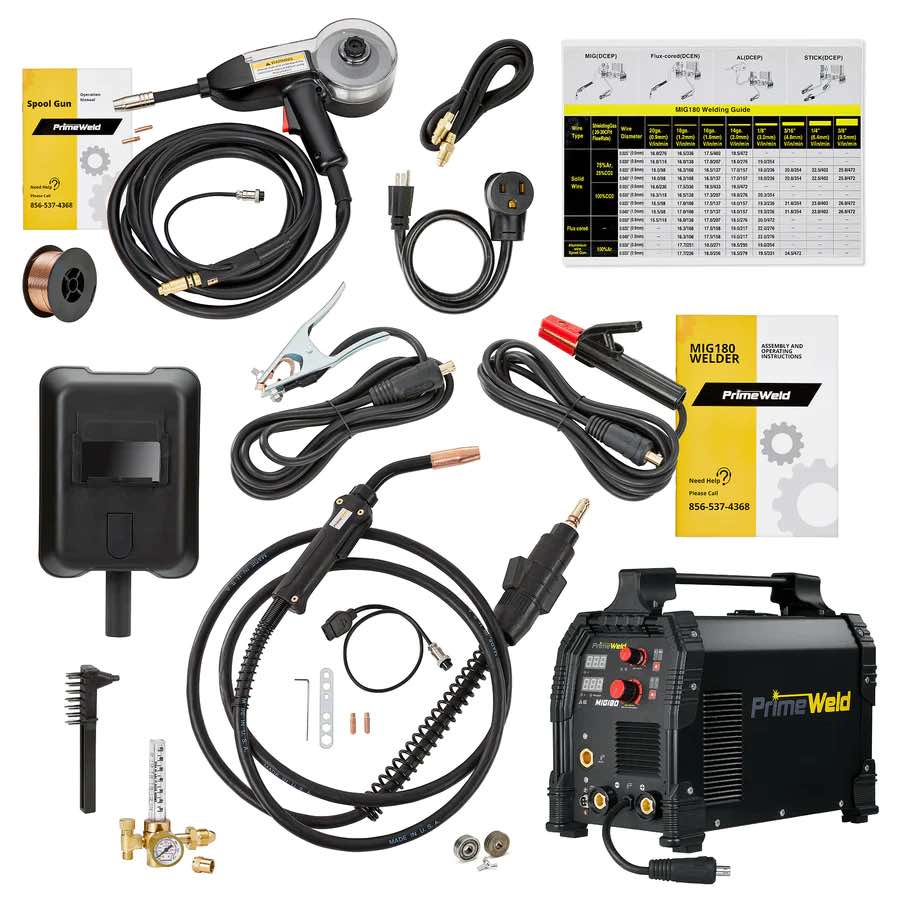How to Mig using both Short Arc and Spray transfer
- HOME
- How to Mig Weld
- How to Mig
learn more about the primeweld mig180 at weldmonger.com
learn more about the MIG 180 at weldmonger.com
This video is all about how to Mig weld using short arc and spray transfer.
But first we need to know a bit about Shielding gases for Mig Welding
Why is there so much confusion out there when it comes to how to mig weld and what Shielding Gases to use for Mig Welding?
I think I know why.
For starters , there is a ton of misunderstanding on mig welding itself.
When you say the term "Mig" , that in itself is confusing because mig stands for metal inert gas and the only metal that uses inert gas is aluminum. For mig welding steel, gas mixtures are used. not inert gases like argon and helium.
Still, People call it mig more than anything else but mig welding is also called,
* wire welding
* wire feed welding
* short arc
* mag welding (metal active gas)
Gas Metal Arc Welding or GMAW is the proper name in the USA but almost no one wants to say all those words..its just easier to say MIG.
to make things even more confusing there is Flux Core Arc Welding or FCAW. Flux core welding uses a tubular wire that has flux inside. Some flux core is self shielded and does not need any shielding gas but some flux core wire does require shielding gas....and here is the kicker...flux core welding is done using a Mig welder.
There are little mig welding machines like the ones you see at Lowes, Home Depot, and Sears and most of them can do both bare wire mig and flux core. There are large high amperage machines that do both as well. So often times when someone refers to Mig Welding, they really mean flux core and vice versa.
So if people are confused on what is mig and what if flux core, no wonder shielding gases for mig welding are confusing as well.
So what if we could boil down the facts on shielding gases? Is that even possible?
here are some guidelines for how to mig weld and what shielding gases work for what:
75/25 argon co2 is the most common shielding gas for short circuit mig welding carbon steel.
That means if all you do is fabrication and its all carbon steel 75/25 ar/co2 might be all you ever need .
straight Co2 is cheaper and can also be used for short circuit mig but is not as good for thin sheet metal.
spray transfer mig is used for really heavy steel and for production welding because its hotter and faster than short circuit.
Common shielding gases used for spray transfer mig are
* 90/10 argon/co2 ( its really hard to get into spray mode with 75/25 ar/co2)
* 95/5 argon/co2
* 98/2 argon/o2
For mig welding stainless steels, a trimix gas mixture of 90 helium, 7.5 argon, and 2.5 co2 is pretty common, so is 98/2 ar/o2 .
For Aluminum, its either pure argon, or an argon helium mix like 50/50. ar/he mixes help on thick stuff.
for flux core arc welding that requires shielding gas, its all over the board.
some flux core wires are designed to be used with straight co2 some are designed to be used with 75/25 ar/co2 or other argon co2 mix
Mig Welding Techniques - Pulling, Pushing, Spraying


What is better?... pushing the puddle ...or pulling the puddle?
If you get all passionate about pulling or pushing then please do yourself and favor....take a deep breath and let it go.
there are times when you need to push and times when it is not possible to push...and you have to pull the puddle.
Guess what? there just aint that much difference.
If you came here looking for some textbook instructions for how to mig info and mig welding techniques, sorry.
I try to tell it like I see it and what I see is not much difference.
Didn't you see the weld cross sections?
There is just not that much difference in the welds whether you push or pull.



















